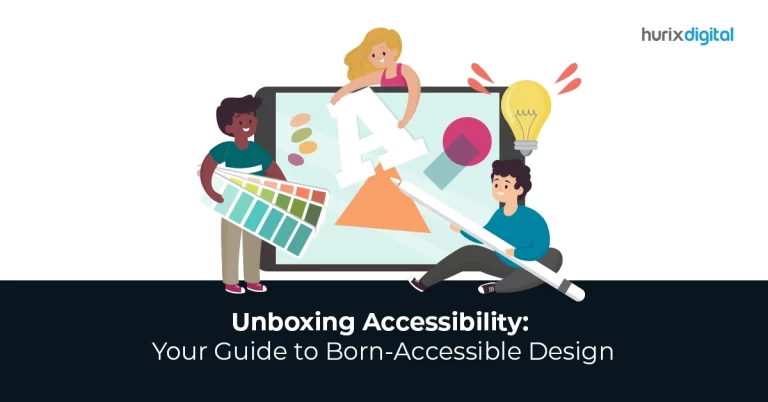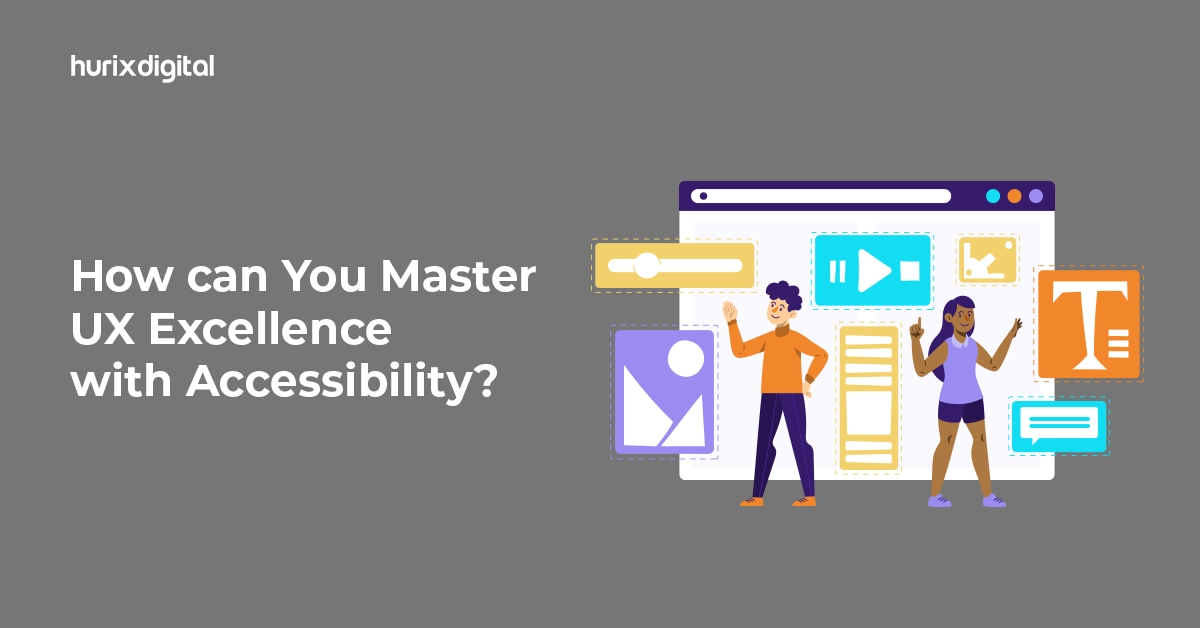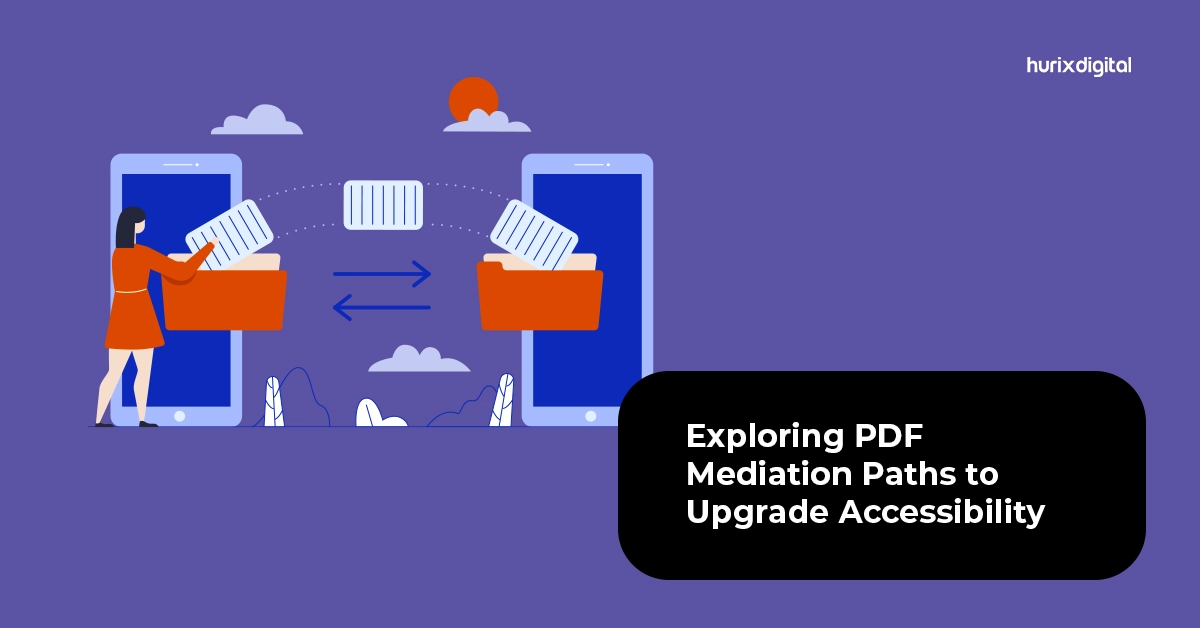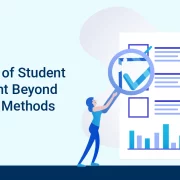
Unboxing Accessibility: Your Guide to Born-Accessible Design
Summary
This blog provides a guide to creating designs that are born accessible. Learn how to integrate accessibility from the start to ensure inclusive user experiences.
With the rise of digital devices, accessibility is the bare minimum expectation from products today. As inclusivity becomes more and more the norm, born-accessible design is on the rise.
Companies that prioritize inclusivity earn an enhanced brand reputation for being more socially responsible. The innovations made in the process have long-term benefits not only for the business but for humanity overall.
New research launched by the Centre for Inclusive Design in partnership with Adobe and Microsoft has revealed that products and services designed with accessibility compliance in mind can reach 4 times the number of intended consumers and impact the bottom line of organizations.
In light of the evolving scenario, born-accessible design is now one of the primary goals in product design.
Table of Contents:
- Understanding Born Accessible Design
- How to Achieve Born Accessible Design?
- The Future is Accessible
Understanding Born Accessible Design
Born accessible refers to a design approach where accessibility is not retroactively fitted. Instead, the primary goal from the start is to make it easy to use for everyone, including those with disabilities. This saves a lot of time and effort later on.
Born accessible design is thus legally compliant with accessibility laws and regulations from the get-go. Its universal usability enhances the user experience and promotes equality.
Furthermore, accessibility allows for a larger market reach and, at the same time, usually results in more search engine-friendly content.
Also Read: 7 Best Ways to Overcome Challenges in Born Accessible Implementation
How to Achieve Born Accessible Design?
Once you understand the need and potential for built-in accessibility in your product, the next question is usually, “How do we achieve it?”.
International bodies such as the World Wide Web Consortium (W3C) and the United Nations (UN) have put guidelines in place to ensure inclusivity. Design principles based on these guidelines will show you ways to access content creation and product design.
1. International Standards for Accessibility and Compliance
Web Content Accessibility Guidelines (WCAG) by W3G
The W3C has designed WCAG 2.0 as an international standard for recommendations for making born-accessible websites accessible. It is an ISO/IEC 40500-compliant standard, making it truly international.
It operates under 4 principles:
- Perceivable
- Operable
- Understandable
- Robust
Each criterion has testable success rates at three levels: A, AA, and AAA. Depending on the level of compliance of your website, a rating is granted.
Convention on the Rights of Persons with Disabilities (CRPD) by the UN
The 2 main articles in CRPD that guide digital accessibility are Articles 9 and 21. These principles align with the principles of the Universal Declaration of Human Rights, which promises everyone the right to life, liberty, and security.
- Article 9: The article specifies that states need to take all possible measures to ensure people with disabilities have access to all possible services and facilities. This includes the physical environment, transportation, information and communications, and other facilities and services.
- Article 21: This article mainly pivots around the right to peaceful assembly. It also extends to the right of individuals with disabilities to express themselves collectively, which brings it to the digital accessibility realm.
2. Standards and Guidelines for Born-Accessible Design
There are many ways to create a product that is born accessible. The best way to ensure this is to keep the following standards and guidelines in mind:
1. User-Centered Design
The key to user-centered design is “empathy.” As a result, when you create a product based on these principles, it is born accessible.
The idea is to create a workflow that is intuitive in its approach as opposed to being focused on the task to be achieved. It considers all aspects, such as age, gender, ability, etc. As a result, user-centric design guidelines are always in tune with accessibility compliance.
2. Universal Design Principles
Universal design principles, as the name suggests, are marketed towards people of diverse abilities. It uses easy-to-understand designs with a high tolerance for error while minimizing physical effort.
Products designed with these principles in mind communicate necessary information effectively while allowing size and space for use. It is flexible, offering a wide range of individual preferences and abilities.
3. Inclusive Design Guidelines
Inclusive design guidelines draw on the full range of human diversity, with user involvement right from the beginning to test out if the system being designed is truly accessible.
Usually, the product team gets together to stress-test concepts right from the beginning, making this a naturally accessible design method. Sometimes, the problem you solve in the process can have a long-term impact on people with disabilities.
3. Achieving Inclusivity with Digital Accessibility Best Practices
The following rules must be kept in mind when designing a truly accessible system:
- Adequate contrast between text and background colors improves readability. This makes content more accessible to users who have visual impairments.
- Relying solely on color excludes the color-blind population from being able to use a product. Other markers that make it accessible are a must.
- Marked buttons, links, and other interactive elements make navigation easier for everyone. It is especially helpful for those with cognitive disabilities.
- Consistent placement of navigation elements that are in line with common practices helps users with memory-related disabilities.
- Providing alternative text for images is a must to make a product accessible to visually impaired users who use screen readers.
- Similarly, for those with hearing impairments, audio and video content must be made accessible through captions and transcripts.
- Ensuring that all functionality is available on a keyboard makes content accessible to users who cannot use a mouse.
- Forms must be clearly labeled for users with cognitive disabilities and those using screen readers.
- Flashes more than three times per second risk inducing seizures in users with photosensitive epilepsy. Avoid using such effects, or at least put a flash warning before them to ensure they can turn away.
- Fonts must be easy to read to help users with visual impairments and dyslexia.
- Texts should be scalable to ensure users with low vision can also read them.
- Tables need to have proper headers and captions to assist users with cognitive disabilities and those using screen readers.
- Visible keyboard focus indicators help users who rely on keyboards for navigation.
- Skip links are great for improving the experience for those using screen readers and keyboards.
- ARIA Landmarks, which are attributes added to HTML elements to create semantically defined sections of a webpage, help screen reader users understand the layout of a page and navigate it more easily.
- Increased error tolerance must be kept in mind when designing the layout and navigation of a page to minimize unintended actions.
Also Read: Healthcare Access for All: Navigating USA’s Digital Accessibility Standards
The Future is Accessible
Born accessible design is now the standard for any website or application being created. However, achieving a truly accessible product may prove to be difficult. But only if you do not have the right partner for the job. Here is where Hurix Digital can come to your rescue.
Hurix Digital leverages AI to revolutionize the field of accessibility compliance. With automated captioning, image recognition, voice interfaces, adaptive content, and a range of personalized experiences, they are market leaders in the field of accessible design.
So, if you are looking for the right digital partner on your journey towards digital inclusivity, choose Hurix today!

Vice President – Digital Content Transformation. He is PMP, CSM, and CPACC certified and has 20+ years of experience in Project Management, Delivery Management, and managing the Offshore Development Centre (ODC).






